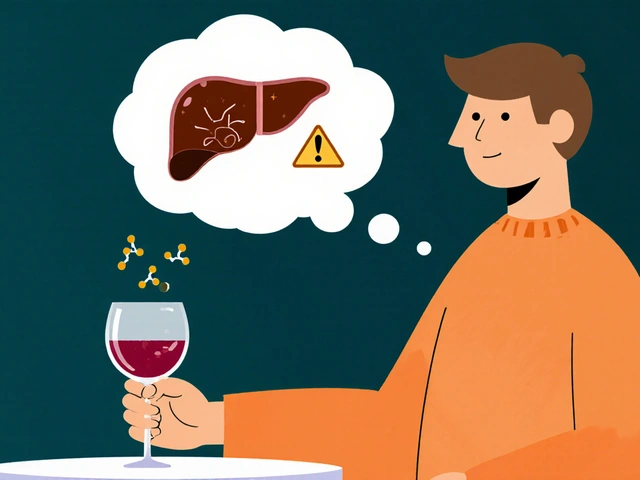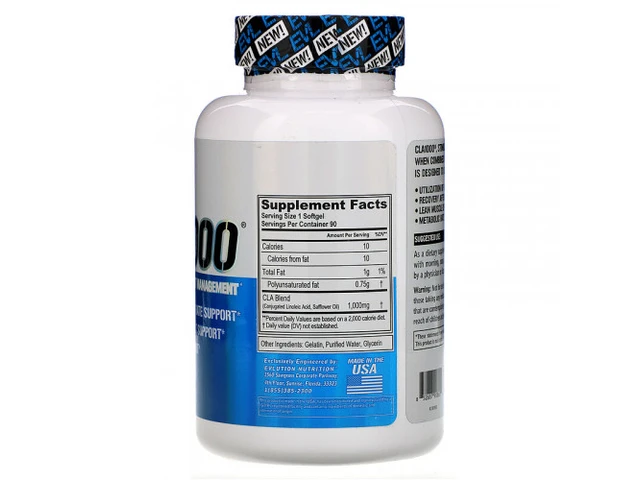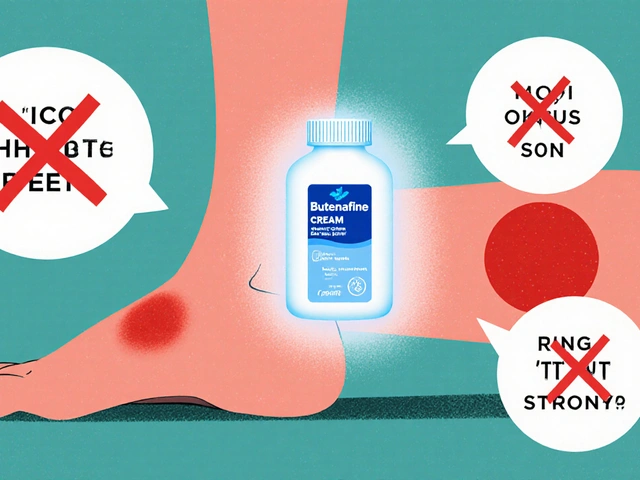
Obesity rates keep climbing, and many adults wonder whether a prescription drug can give them the edge they need. The big question isn’t just "does it work?" but "how does it stack up against the other options out there?" This guide walks you through a detailed Mysimba comparison, breaking down the science, the results, and the trade‑offs so you can decide which medication fits your health goals.
What is Mysimba and how does it work?
When doctors prescribe Mysimba is a fixed‑dose combination of naltrexone and bupropion approved for chronic weight management in adults with a BMI of 30 kg/m² or higher (or 27 kg/m² with weight‑related conditions), they’re betting on a dual‑action approach.
The first component, Naltrexone is a opioid‑receptor antagonist that helps reduce the reward signals linked to food intake. By dampening the brain’s pleasure response to eating, cravings become easier to control.
The second component, Bupropion is a dopamine‑norepinephrine reuptake inhibitor originally used for depression and smoking cessation. It boosts the activity of pro‑opiomelanocortin (POMC) neurons, which promote satiety.
Together, the two agents create a synergistic effect: less appetite, more fullness, and a modest boost in energy expenditure. Clinical trials report an average weight loss of about 5‑7 % of baseline weight after one year of treatment, provided the drug is paired with diet and exercise.
Major alternatives on the market
Several other prescription products target the same patient population, each with a different mechanism.
- Contrave is essentially the same combination as Mysimba but marketed in the United States under a different brand name.
- Qsymia mixes phentermine, a stimulant that suppresses appetite, with topiramate, an anticonvulsant that also reduces cravings.
- Saxenda contains liraglutide, a GLP‑1 (glucagon‑like peptide‑1) receptor agonist that slows gastric emptying and enhances satiety.
- Wegovy delivers semaglutide, a newer GLP‑1 agonist with a stronger weight‑loss signal than liraglutide.
- Orlistat works in the gut, blocking about 30 % of dietary fat absorption.
Each of these drugs received FDA approval for obesity treatment, but they differ in how they influence hunger, metabolism, and side‑effect profiles.
Side‑by‑side comparison table
| Drug | Mechanism | Approved Indication | Average % Weight Loss (12 mo) | Common Side Effects | Typical Monthly Cost (US) |
|---|---|---|---|---|---|
| Mysimba (Naltrexone/Bupropion) | Opioid‑receptor antagonist + dopamine‑noradrenaline reuptake inhibitor | BMI ≥ 30 or ≥ 27 with comorbidity | 5‑7 % | Nausea, headache, insomnia, hypertension | $250‑$300 |
| Contrave | Same as Mysimba (US brand) | Same as Mysimba | 5‑6 % | Nausea, constipation, dry mouth | $250‑$300 |
| Qsymia (Phentermine/Topiramate) | Stimulant appetite suppressant + GABA‑modulating anticonvulsant | BMI ≥ 30 or ≥ 27 with comorbidity | 8‑10 % | Tingling, dizziness, memory issues, increased heart rate | $150‑$200 |
| Saxenda (Liraglutide) | GLP‑1 receptor agonist | BMI ≥ 30 or ≥ 27 with comorbidity | 6‑8 % | Nausea, vomiting, diarrhea, gallbladder disease | $1,200‑$1,400 |
| Wegovy (Semaglutide) | Long‑acting GLP‑1 receptor agonist | BMI ≥ 30 or ≥ 27 with comorbidity | 12‑15 % | Nausea, constipation, abdominal pain, risk of pancreatitis | $1,300‑$1,500 |
| Orlistat | Lipase inhibitor (reduces fat absorption) | BMI ≥ 28 | 3‑4 % | Steatorrhea, oily spotting, vitamin‑D deficiency | $60‑$80 |
How to choose the right medication for you
Start with a realistic self‑assessment. Ask yourself:
- Do I have any heart‑related conditions? Stimulants like phentermine (Qsymia) can raise heart rate and blood pressure.
- Am I comfortable with injectable drugs? GLP‑1 agents (Saxenda, Wegovy) require weekly or daily shots.
- Do I have a history of seizures or mood disorders? Bupropion (Mysimba) may lower the seizure threshold.
- Is cost a limiting factor? Orlistat and Qsymia are usually cheaper than GLP‑1 therapies.
- How important is rapid weight loss? Wegovy shows the biggest drop but also the highest price tag.
Discuss these points with your physician. They’ll review your medical history, current meds, and insurance coverage to narrow the list.
Pros and cons of each option
- Mysimba
- Pros: Oral pill, modest efficacy, works on both appetite and reward pathways.
- Cons: Can raise blood pressure, not suitable for people with uncontrolled hypertension.
- Contrave
- Pros: Same data as Mysimba, available in the US.
- Cons: Same side‑effect profile; insurance coverage can be spotty.
- Qsymia
- Pros: Highest oral‑only efficacy, cheap compared to injectables.
- Cons: Stimulant component can cause insomnia, tachycardia, and mood swings.
- Saxenda
- Pros: Strong appetite suppression, useful for those who struggle with cravings.
- Cons: Daily injection, expensive, gastrointestinal side effects.
- Wegovy
- Pros: Best overall weight‑loss numbers, once‑monthly injection.
- Cons: Highest cost, similar GI side effects, requires titration schedule.
- Orlistat
- Pros: Over‑the‑counter option, no systemic absorption.
- Cons: Modest results, oily stools, need to take with meals containing fat.
Practical tips for getting the most out of any weight‑loss drug
- Schedule a baseline visit: get your weight, BMI, blood pressure, and basic labs (glucose, lipids, liver enzymes).
- Commit to a nutrition plan: a 500‑calorie deficit combined with at least 150 minutes of moderate activity per week maximizes drug benefit.
- Track side effects: keep a simple log so you can discuss trends with your provider.
- Plan for tapering: most medications require gradual dose reduction if you stop early.
- Insurance check‑in: confirm coverage before the first fill to avoid surprise out‑of‑pocket costs.
Quick decision checklist
- Prefer oral pill and moderate cost? → Mysimba or Qsymia.
- Need highest efficacy and can afford injections? → Wegovy.
- Concerned about heart rate or have hypertension? → Avoid Qsymia, consider Mysimba (monitor BP).
- Want a non‑systemic option with no prescription? → Orlistat.
- Have a history of seizures or are on antidepressants? → Discuss bupropion‑containing combos carefully.
Frequently Asked Questions
How long does it take to see results with Mysimba?
Most patients notice a modest reduction in appetite within the first two weeks, and measurable weight loss (about 1‑2 % of body weight) after the first month if diet and exercise are followed.
Can I combine Mysimba with other weight‑loss drugs?
No. Combining two prescription obesity medications increases the risk of adverse events and is not recommended by the FDA.
What happens if I miss a dose?
Take the missed tablet as soon as you remember, unless it’s less than 8 hours before the next scheduled dose. In that case skip the missed pill and continue with your regular schedule. Never double‑dose.
Is Mysimba safe for people with diabetes?
Yes, it can be used, but doctors usually monitor glucose more closely because weight loss can affect insulin sensitivity and medication needs.
How does the cost of Mysimba compare to GLP‑1 drugs?
Mysimba costs roughly $250‑$300 per month, while GLP‑1 therapies like Wegovy can exceed $1,400 per month. Insurance coverage varies widely, so check your plan.
Choosing the right obesity medication isn’t a one‑size‑fits‑all decision. By weighing mechanism, efficacy, side‑effect risk, and price, you can partner with your clinician to pick the option that aligns with your health profile and lifestyle.
Samantha Taylor
The pharmacologic rationale behind Mysimba is, on paper, quite elegant: a dual‑action regimen targeting both the hedonic drive to eat and the homeostatic satiety pathways. Yet, as anyone who has actually prescribed or taken it can attest, the real world rarely aligns with tidy mechanistic cartoons. The naltrexone component dampens opioid‑mediated reward, which sounds promising until you consider that most patients are not even chasing endorphin highs from a sandwich. Meanwhile, bupropion nudges POMC neurons, but it also carries the well‑known risk of increasing blood pressure-a side effect that can be fatal for the very hypertensive cohort that would benefit most from weight loss. Clinical trials report an average 5‑7% reduction in body weight after a year, but that number assumes strict adherence to diet, exercise, and regular follow‑up visits, a trifecta many patients simply cannot maintain. Compared with Qsymia’s 8‑10% or Wegovy’s staggering 12‑15%, Mysimba looks more like a modest side‑step than a leap forward. Moreover, the cost-$250‑$300 per month-places it squarely in the middle of the price spectrum, making it a tempting compromise for insurers but a dubious long‑term investment for patients. Adverse events such as nausea, insomnia, and hypertension further muddy the risk‑benefit calculus, especially when alternative GLP‑1 agonists offer more robust efficacy albeit at a higher price tag. In short, Mysimba’s appeal lies in its oral administration and its “one‑pill” convenience, but those advantages are offset by modest efficacy, a non‑trivial side‑effect profile, and the ever‑present need for lifestyle modifications. So, if you’re looking for a magic bullet that works without effort, you’ll be sorely disappointed. The truth is that any pharmacologic aid for obesity must be coupled with sustained behavioral change, and Mysimba is no exception.
Joe Langner
I get why many people feel hopeful about these drugs-they promise a shortcut when every diet feels like a battle. The table you posted makes it easy to see which options are the cheapest and which give the biggest numbers, but real life is messier. I tried Mysimba once and the nausea was real, but after a few weeks I started to see a small drop in my waistline. It definitely helped that I also started walking 30 minutes a day, even though I would have preferred just the pill. If you can afford Wegovy, go for it, but if you’re on a tight budget or can’t handle injections, Mysimba or Qsymia are decent middle‑ground choices. Just remember, no pill will replace hard work-its not a miracle, its a tool.
Ben Dover
From a mechanistic standpoint, the combination of naltrexone and bupropion represents a theoretically sound but practically limited approach. While the opioid‑antagonist property attenuates reward‑related eating, the dopaminergic activation of bupropion is modest compared with the robust appetite suppression observed in GLP‑1 agonists. The modest 5‑7 % weight reduction reported in trials is statistically significant yet clinically marginal, especially when juxtaposed with the 12‑15 % achieved by semaglutide. Moreover, the cardiovascular risk profile-particularly the propensity for hypertension-necessitates rigorous monitoring, thereby reducing its suitability for patients with comorbid hypertension. In summary, the pharmacodynamics of Mysimba do not confer a decisive advantage over either the stimulant‑based Qsymia or the incretin‑based agents, and its cost‑effectiveness remains questionable.
Katherine Brown
Considering the evidence presented, it is prudent to evaluate each medication not merely by its percentage of weight loss but by its overall safety profile, patient adherence potential, and socioeconomic impact. While Wegovy demonstrates superior efficacy, its monthly cost exceeds $1,300, rendering it inaccessible for many. Conversely, oral agents such as Mysimba and Qsymia may offer a more feasible option for patients who either cannot tolerate injections or lack sufficient insurance coverage. Ultimately, a shared decision‑making process that incorporates the patient’s comorbid conditions, lifestyle preferences, and financial constraints will yield the most appropriate therapeutic selection.
Tony Stolfa
If you want a cheap pill, stop wasting money on hype.
Diana Jones
When you parse the data, it becomes evident that the incremental benefit of Mysimba over a disciplined caloric deficit is minimal, yet the pharmacologic synergy is often overstated in marketing brochures. The adverse‑event spectrum-ranging from transient nausea to sustained hypertension-necessitates a risk‑benefit analysis that extends beyond raw efficacy numbers. In clinical practice, patients who adhere to structured nutrition and exercise regimens tend to outperform those who rely solely on medication, regardless of the drug’s mechanistic sophistication. Therefore, it is advisable to position Mysimba as an adjunct rather than a primary driver of weight loss, employing it within a comprehensive, multidisciplinary framework.
Abbey Travis
Let’s break down the practical side of each option without getting tangled in jargon. Oral meds like Mysimba and Qsymia are convenient if you hate needles, but watch out for side‑effects like insomnia or heart‑rate spikes. Injections such as Saxenda or Wegovy pack more punch, though they’ll hit your wallet harder. If cost is a deal‑breaker, Orlistat offers a modest result with minimal systemic exposure, but be prepared for greasy stools. The key is to match the drug to your lifestyle, medical history, and budget, then support it with solid diet and movement habits.
ahmed ali
Honestly, the whole comparison table feels like a marketing camo, and I can’t help but point out the hidden variables that most readers overlook. First, the "average % weight loss" figures are derived from controlled trial populations that are far more compliant than the average patient. Second, the cost column ignores the fact that insurance formularies often dictate a copay that is not reflected in the listed price. Third, the side‑effect profiles are presented as static lists, yet the incidence rates differ dramatically based on individual comorbidities and concurrent medications. Fourth, the table omits long‑term sustainability data-most studies track outcomes for only one year, while obesity is a chronic condition. Fifth, the efficacy of GLP‑1 analogues like Wegovy is partially driven by aggressive titration schedules that many clinicians hesitate to implement in practice. Sixth, oral combos such as Mysimba require strict adherence to a three‑tablet daily regimen, which can be a barrier for patients with hectic schedules. Seventh, the table fails to mention the psychological component-some patients experience a placebo‑driven boost in motivation when they start any new therapy. Eighth, the metabolic impact of each drug varies; for instance, bupropion can raise blood pressure, which is a non‑trivial concern for hypertensive individuals. Ninth, the real‑world data on Qsymia’s cognitive side‑effects, like memory lapses, is still emerging. Tenth, the table doesn’t account for the fact that some patients may be eligible for bariatric surgery, which often outperforms pharmacotherapy in both weight loss and comorbidity resolution. Finally, the decision matrix should incorporate patient preferences about oral versus injectable routes, not just raw numbers. In short, while the table is a handy snapshot, a nuanced, individualized assessment is indispensable.
Deanna Williamson
Statistically, the weight‑loss percentages shown for each drug are derived from intention‑to‑treat analyses, which tend to dilute the true effect size observed in adherent subpopulations. Moreover, the confidence intervals around the 5‑7 % figure for Mysimba often overlap with those for Contrave, indicating that the difference is not clinically meaningful. It is also worth noting that the adverse‑event rates, particularly for hypertension with Mysimba, can negate the modest benefits when considering overall morbidity. Therefore, clinicians should weigh the incremental efficacy against the potential for iatrogenic complications, especially in patients with pre‑existing cardiovascular risk.
Miracle Zona Ikhlas
Bottom line: pick the therapy that aligns with your health profile, budget, and willingness to inject, then back it up with consistent lifestyle changes.
naoki doe
In practice, insurance coverage often decides which medication actually reaches the patient, regardless of the clinical nuances. Many payors place step‑therapy requirements, pushing patients onto cheaper options like Orlistat before approving GLP‑1 agents. This creates a cascade where the most effective treatments are reserved for those who can navigate the bureaucratic hurdles.
sarah basarya
What a pathetic excuse for a checklist-pretending that ticking boxes about cost and side effects magically solves the deeper issue that most of these drugs are band‑aid solutions to a lifestyle epidemic.






Write a comment